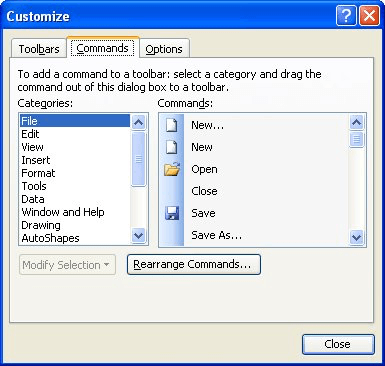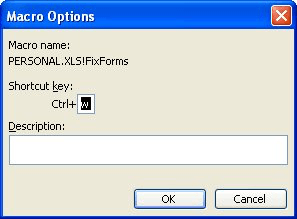Please Note: This article is written for users of the following Microsoft Excel versions: 97, 2000, 2002, and 2003. If you are using a later version (Excel 2007 or later), this tip may not work for you. For a version of this tip written specifically for later versions of Excel, click here: Creating a Shortcut for Pasting Values.
Written by Allen Wyatt (last updated January 27, 2024)
This tip applies to Excel 97, 2000, 2002, and 2003
One of the most often-used commands in Excel is the Paste Special option from the Edit menu, where you can figure out exactly how you want information pasted into a worksheet. On the Paste Special dialog box, the Values selection is undoubtedly the one used the most. Since pasting only values in this manner is used so often, you might think that Microsoft would provide a shortcut key to, well, just paste values.
Unfortunately, they don't provide one. There are ways around this, however. One way is to just create a toolbar button that pastes values for you. All you need to do is follow these steps:

Figure 1. The Commands tab of the Customize dialog box.
Now, whenever you want to paste just the values, you can click on the new toolbar button.
If you don't want to use the mouse to paste values, then you can use the tried-and-true keyboard sequence to paste values: Alt+E, S, V, Enter. This sequence selects the menus and dialog box options necessary to paste values.
If you want a shorter keyboard shortcut, the best way to do it is to create a macro that does the pasting for you, and then make sure that you assign a keyboard shortcut to the macro. For instance, create the following simple macro:
Sub PasteVal()
Selection.PasteSpecial Paste:=xlValues
End Sub
Now, follow these steps:

Figure 2. The Macro Options dialog box.
Now, whenever you want to paste values, all you need to do is press Ctrl+G, the macro is run, and the values in the Clipboard are pasted to the selected cell.
Note:
ExcelTips is your source for cost-effective Microsoft Excel training. This tip (2657) applies to Microsoft Excel 97, 2000, 2002, and 2003. You can find a version of this tip for the ribbon interface of Excel (Excel 2007 and later) here: Creating a Shortcut for Pasting Values.

Dive Deep into Macros! Make Excel do things you thought were impossible, discover techniques you won't find anywhere else, and create powerful automated reports. Bill Jelen and Tracy Syrstad help you instantly visualize information to make it actionable. You’ll find step-by-step instructions, real-world case studies, and 50 workbooks packed with examples and solutions. Check out Microsoft Excel 2019 VBA and Macros today!
Want a really easy way to create a selection of a group of cells? Discover how to use the Extend key to make this task ...
Discover MoreNeed to modify how a cell reference, in a formula, is constructed? The shortcut described in this tip will help you step ...
Discover MoreYou may be looking for a way to have a formula determine if a particular cell has anything in it. Here's how you can find ...
Discover MoreFREE SERVICE: Get tips like this every week in ExcelTips, a free productivity newsletter. Enter your address and click "Subscribe."
There are currently no comments for this tip. (Be the first to leave your comment—just use the simple form above!)
Got a version of Excel that uses the menu interface (Excel 97, Excel 2000, Excel 2002, or Excel 2003)? This site is for you! If you use a later version of Excel, visit our ExcelTips site focusing on the ribbon interface.
FREE SERVICE: Get tips like this every week in ExcelTips, a free productivity newsletter. Enter your address and click "Subscribe."
Copyright © 2025 Sharon Parq Associates, Inc.
Comments